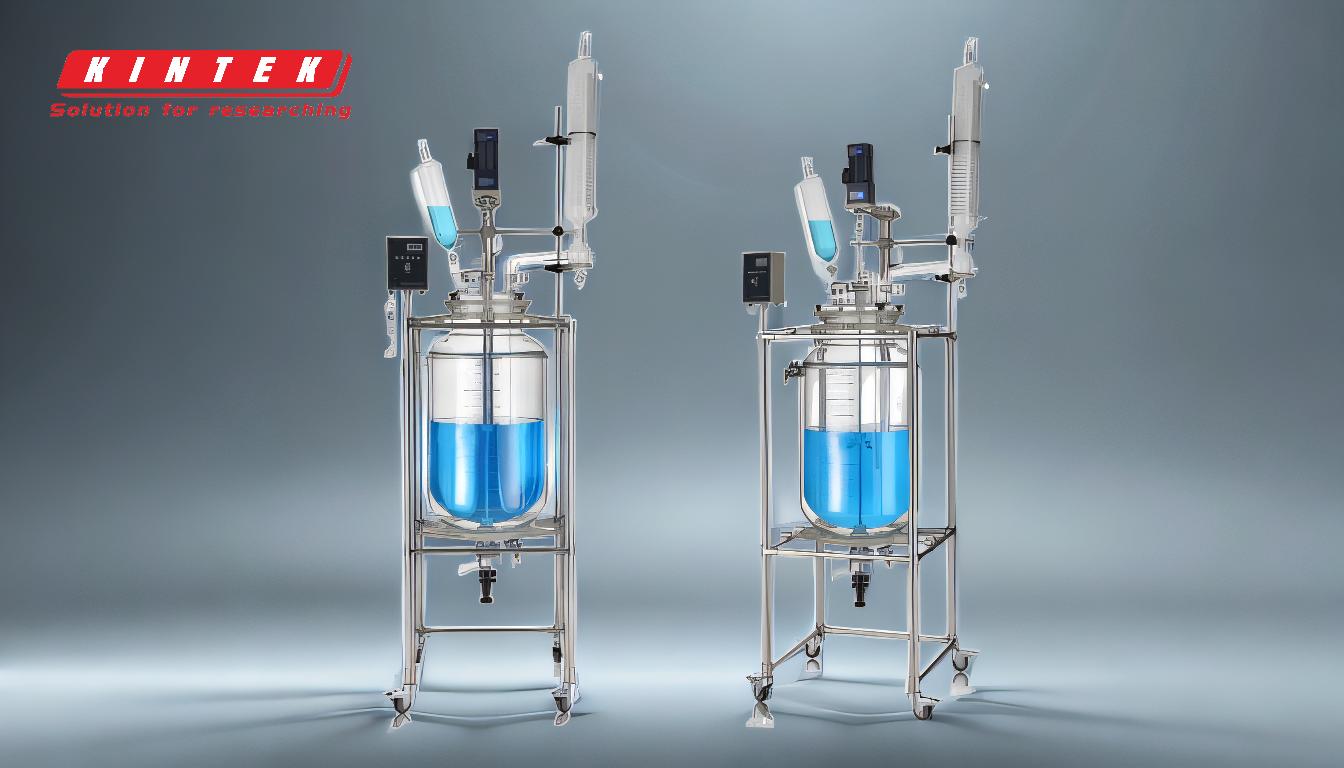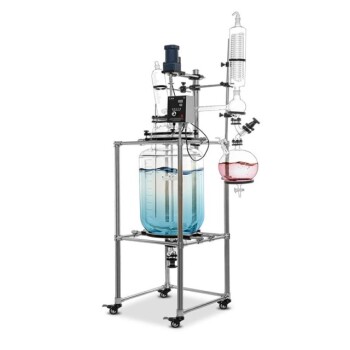Jacketed heating is a process used in various industrial applications to control the temperature of a reaction or substance within a vessel. This is achieved by surrounding the vessel with a jacket that circulates a heat transfer fluid, allowing for precise heating or cooling. Jacketed reactors are widely used in industries such as pharmaceuticals, food production, chemicals, and engine oil manufacturing. They are particularly valuable for processes requiring strict temperature control, such as exothermic reactions, distillations, and crystallizations. The jacket ensures uniform internal conditions, improving product quality and process efficiency while reducing energy consumption.
Key Points Explained:

-
Definition of Jacketed Heating:
- Jacketed heating involves the use of a vessel surrounded by a jacket that circulates a heat transfer fluid (such as water, oil, or steam) to control the temperature of the contents inside the vessel.
- This method is used for both heating and cooling, depending on the requirements of the process.
-
Applications of Jacketed Reactors:
- Pharmaceuticals: Used in API (Active Pharmaceutical Ingredient) manufacturing, crystallization, and other processes requiring precise temperature control.
- Chemical Processing: Essential for reactions like distillations, reflux reactions, and extractions.
- Food Industry: Employed in processes where temperature-sensitive ingredients are involved.
- Engine Oil Production: Helps in controlling the viscosity of highly viscous liquids and improving product quality.
- Research and Development: Used in biofuel production, electrochemistry, and environmental testing.
-
Benefits of Jacketed Heating:
- Temperature Control: Ensures precise and uniform temperature regulation, which is critical for maintaining reaction conditions and product quality.
- Energy Efficiency: The insulation provided by the jacket reduces the energy required to maintain the desired temperature.
- Versatility: Suitable for both heating and cooling, making it adaptable to a wide range of industrial processes.
- Safety: Helps manage exothermic reactions safely by dissipating excess heat.
-
How Jacketed Heating Works:
- The jacket surrounding the reactor vessel is filled with a heat transfer fluid.
- The fluid is circulated through the jacket, either heated or cooled, depending on the process requirements.
- The heat transfer fluid then exchanges heat with the contents of the vessel, ensuring uniform temperature distribution.
-
Types of Jacketed Reactors:
- Glass Jacketed Reactors: Commonly used in laboratories and small-scale production for their transparency and chemical resistance.
- Stainless Steel Jacketed Reactors: Preferred in large-scale industrial applications for their durability and ability to handle high pressures and temperatures.
-
Importance in Specific Processes:
- Exothermic Reactions: Jacketed reactors help dissipate heat generated during exothermic reactions, preventing runaway reactions and ensuring safety.
- Viscosity Control: In processes involving highly viscous liquids, jacketed heating reduces viscosity, facilitating easier handling and processing.
- Crystallization: Precise temperature control is crucial for the formation of high-quality crystals in pharmaceutical and chemical manufacturing.
-
Design Considerations:
- Material Selection: The choice of materials for the reactor and jacket depends on the chemical compatibility and thermal properties required for the process.
- Heat Transfer Fluid: The type of fluid used (e.g., water, oil, steam) is selected based on the temperature range and heat transfer efficiency needed.
- Insulation: Proper insulation is essential to minimize heat loss and improve energy efficiency.
By understanding these key points, equipment and consumable purchasers can make informed decisions about the type of jacketed heating systems that best meet their operational needs.
Summary Table:
| Aspect | Details |
|---|---|
| Definition | Vessel surrounded by a jacket circulating heat transfer fluid for heating/cooling. |
| Applications | Pharmaceuticals, chemical processing, food industry, engine oil production. |
| Benefits | Precise temperature control, energy efficiency, versatility, safety. |
| How It Works | Heat transfer fluid circulates through the jacket, exchanging heat with the vessel. |
| Types of Reactors | Glass jacketed (lab use), stainless steel (industrial use). |
| Key Processes | Exothermic reactions, viscosity control, crystallization. |
| Design Considerations | Material selection, heat transfer fluid, insulation. |
Ready to optimize your industrial processes with jacketed heating? Contact our experts today for tailored solutions!














